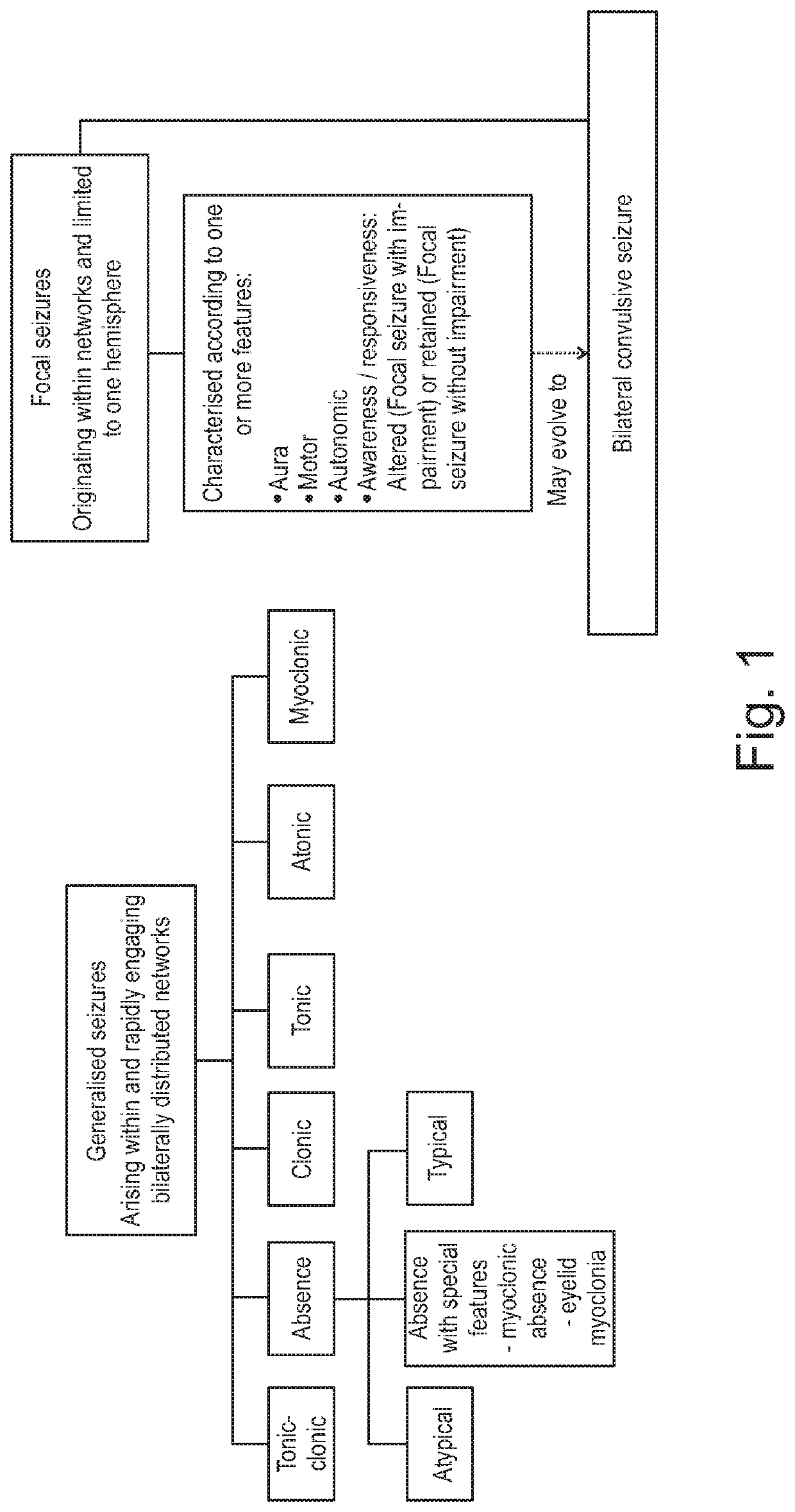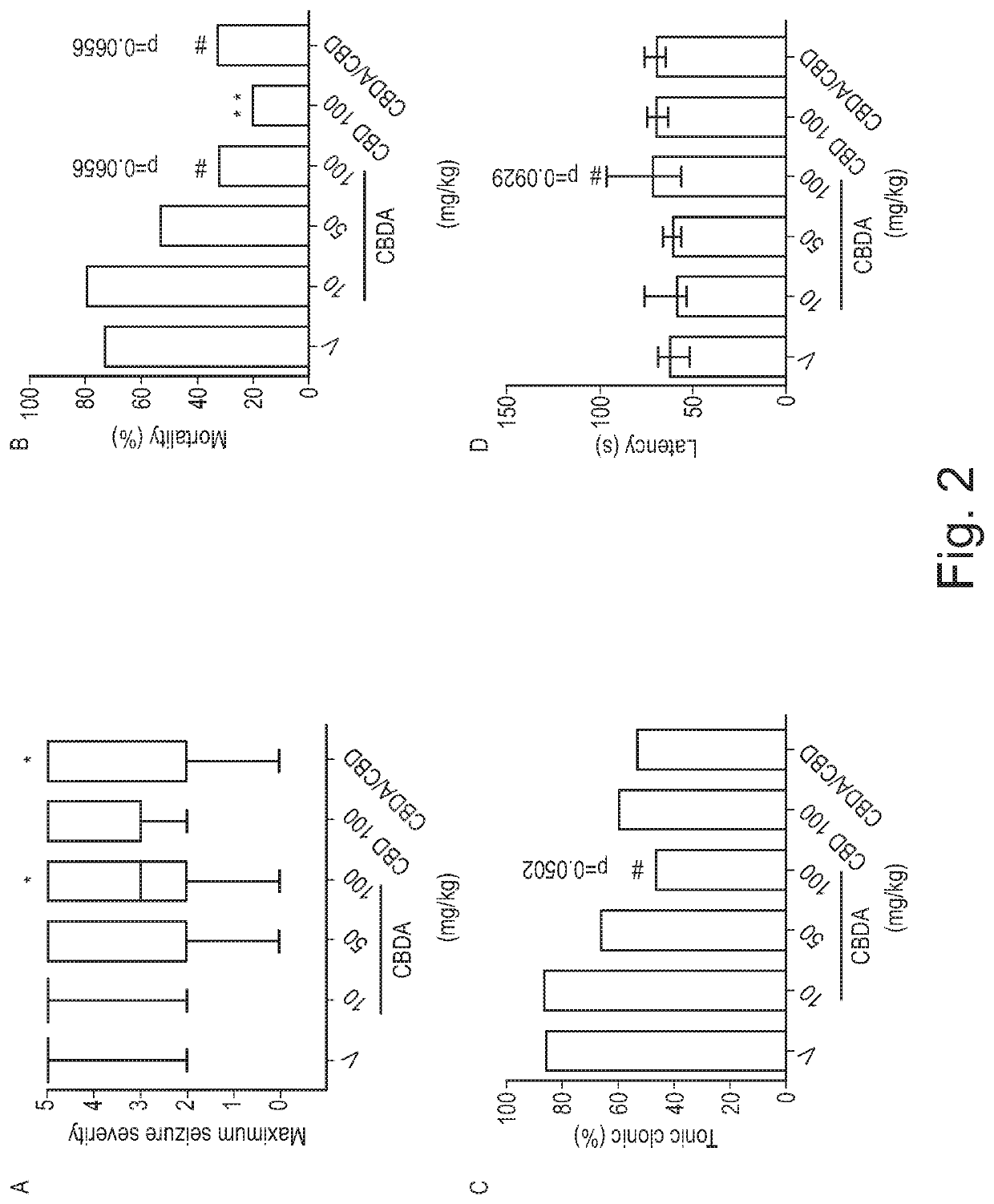Use of cannabinoids in the treatment of epilepsy
a cannabinoid and epilepsy technology, applied in the field of cannabinoids in the treatment of epilepsy, can solve the problems of difficult treatment, cognitive, behavioral and motor delays, inability to obtain seizure freedom, etc., and achieve the effects of less cbda dose, increased bioavailability of cbda, and improved treatment
- Summary
- Abstract
- Description
- Claims
- Application Information
AI Technical Summary
Benefits of technology
Problems solved by technology
Method used
Image
Examples
example 1
o Evaluation of CBDA in the Acute Pentylenetetrazole (Ptz) Model of Generalised Seizure
Materials and Methods
Animals
[0076]Adult male Wistar Kyoto rats were used in the acute PTZ model of seizure (>P24, 70-110 g). Animals were housed five per cage in a heat regulated room (21° C.) on a 12:12 h day / night cycle (lights on 0800) in 50% humidity and given ad libitum access to standard laboratory chow (PCD Mod C, Special Diet Services, Wiltham, UK) and water. All procedures were undertaken during white light hours.
[0077]A PTZ (Sigma-Aldrich, Poole, UK) stock solution was made in 0.9% w / v NaCl for the experimental procedure. CBD (batch number, CBD-CG-1001; GW Pharmaceuticals, Salisbury, UK) and CBDA (batch number, CBDA040912; GW Pharmaceuticals) stocks were made in a 2:1:17 vehicle of ethanol, cremophor and saline.
[0078]Formulation analysis was undertaken to determine whether CBDA decarboxylated to CBD because of temperature and / or the excipients in the formulation...
PUM
| Property | Measurement | Unit |
|---|---|---|
| w/w | aaaaa | aaaaa |
| w/w | aaaaa | aaaaa |
| humidity | aaaaa | aaaaa |
Abstract
Description
Claims
Application Information
 Login to View More
Login to View More - R&D
- Intellectual Property
- Life Sciences
- Materials
- Tech Scout
- Unparalleled Data Quality
- Higher Quality Content
- 60% Fewer Hallucinations
Browse by: Latest US Patents, China's latest patents, Technical Efficacy Thesaurus, Application Domain, Technology Topic, Popular Technical Reports.
© 2025 PatSnap. All rights reserved.Legal|Privacy policy|Modern Slavery Act Transparency Statement|Sitemap|About US| Contact US: help@patsnap.com



